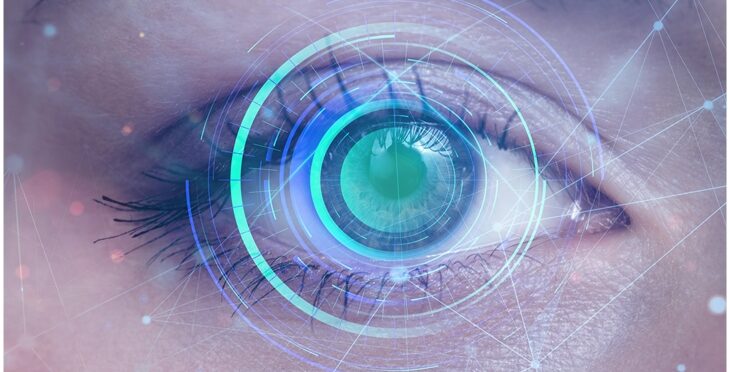Neighborhood Glaucoma Service Near Me: Trusted Professionals for Eye Wellness
Neighborhood Glaucoma Service Near Me: Trusted Professionals for Eye Wellness
Blog Article
Understanding the Numerous Eye Issues Dealt With by Specialized Eye Treatment Professionals
In the world of eye care, specialized professionals play a vital function in detecting and dealing with a vast variety of eye conditions. As we begin on this exploration of the numerous eye conditions attended to by specialized eye treatment experts, it ends up being evident that the intricate web of ocular wellness holds a myriad of interesting insights waiting to be discovered.
Usual Refractive Errors
Refractive errors are common visual conditions triggered by a blemish in the eye's capacity to properly concentrate light, causing blurred vision. The most common types of refractive mistakes consist of myopia (nearsightedness), hyperopia (farsightedness), astigmatism, and presbyopia. Myopia takes place when the eyeball is also lengthy or the cornea is too bent, creating distant challenge show up blurry. Hyperopia, on the other hand, happens when the eyeball is as well short or the cornea is too level, leading to nearby objects running out emphasis. Astigmatism is defined by an irregularly designed cornea, resulting in altered or blurred vision at all distances. Presbyopia is an age-related condition where the lens loses its adaptability, making it challenging to focus on close items.
These refractive errors can be remedied through various techniques, consisting of glasses, get in touch with lenses, or refractive surgical treatment. Eye care experts play an essential function in detecting and managing refractive mistakes to help individuals achieve more clear vision and improve their lifestyle.
Age-Related Eye Problems
One of the most common age-related eye problems is age-related macular degeneration (AMD), an illness that creates central vision loss and can make activities like reading and driving tough. Cataracts, another typical problem among older individuals, cause clouding of the eye's natural lens, leading to obscured vision. Routine eye examinations with specialized eye treatment experts are vital for early discovery and administration of these age-related eye conditions to protect vision and maintain eye health and wellness as people expand older.
Vision-Threatening Illness
Vision-threatening illness encompass a variety of serious eye conditions that have the potential to significantly impact an individual's sight and overall aesthetic feature. These illness posture a danger of permanent vision loss otherwise immediately detected and dealt with by specialized eye treatment experts. Some common vision-threatening diseases their explanation consist of glaucoma, diabetic retinopathy, age-related macular degeneration (AMD), and retinal detachment.
Glaucoma is a team of eye problems that damage the optic nerve, often due to high intraocular stress, resulting in peripheral vision loss and potential blindness if left neglected. Diabetic retinopathy is an issue of diabetic issues that influences blood vessels in the retina, creating vision disability or loss of sight. AMD is a dynamic problem impacting the macula, causing central vision loss. Retinal detachment occurs when description the retina divides from its underlying cells, resulting in abrupt vision loss that calls for prompt medical focus (refractive surgeries in al).
Very early discovery, routine eye exams, and timely treatment are vital in managing vision-threatening illness to protect eyesight and keep high quality of life. Specialized eye treatment professionals play an important role in diagnosing, dealing with, and managing these problems to avoid irreversible vision loss.

Corneal Conditions
Corneal conditions include a spectrum of problems that affect the clear front part of the eye, recognized as the cornea. Treatment for corneal disorders differs depending on the certain problem yet may consist of drugs, contact lenses, or in extreme situations, corneal transplants. Routine eye exams are essential for very early detection and management of corneal problems to preserve vision and eye wellness.
Neurological Eye Conditions
Neurological eye conditions entail disorders that affect the link in between the eyes and the mind, affecting aesthetic processing and general eye function. These conditions can show up in numerous ways, affecting vision, eye motions, and even the control between the eyes. One usual neurological eye condition is optic neuritis, identified by inflammation of the optic nerve causing vision loss, color desaturation, and pain with eye motion.
An additional significant problem is nystagmus, where the eyes make repetitive, uncontrolled movements, affecting aesthetic acuity and deepness assumption. In addition, conditions like amblyopia, commonly described as "careless eye," result from uncommon visual development in early youth, bring about decreased vision in one eye.
Neurological eye conditions require customized treatment check out here from professionals like neuro-ophthalmologists who have knowledge in both neurology and ophthalmology. Diagnosis usually includes a comprehensive eye assessment, imaging research studies, and partnership with neurologists to attend to the underlying neurological concerns affecting the visual system. Treatment methods can consist of drug, vision therapy, or in severe cases, medical treatments to handle these complicated problems successfully.

Verdict
In conclusion, specialized eye care experts treat a wide variety of eye problems, including common refractive errors, age-related eye conditions, vision-threatening illness, corneal disorders, and neurological eye problems - refractive surgeries in al. By recognizing these different conditions and seeking proper therapy from eye care specialists, individuals can preserve ideal eye health and vision. It is essential to prioritize normal eye assessments and comply with advised therapy plans to preserve and safeguard one's vision for the future
Report this page